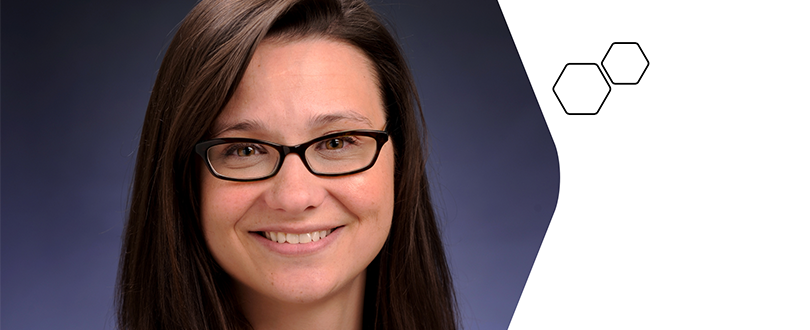COVID-19 Infodemic: The Challenge of Health Information in the Age of COVID-19

Jamie Gray, MLS, MS
Associate Librarian
Director, Distributed eLibrary
Weill Cornell Medicine–Qatar
The spread of health misinformation is not a new phenomenon, but the speed and volume of its dissemination has exploded in recent years due to the rapid increase in internet connectivity, access to mobile technologies, increasing polarization of society, and the use of social media. Research on social network use during crisis situations has found that during times of emergency, people use the online world to connect and share information, in an effort to collectively understand the events that are unfolding in the world and the situation around them (Arif, 2016). Infodemics, such as the one currently occurring around COVID-19, happen as vast amounts of information, true and untrue, rapidly flood into the information landscape. This surge of data makes it difficult for individuals to find the reliable and authoritative information they need to navigate the issue at hand (WHO, 2020). In this framing, the quantity of information is a factor, as well as, the quality. Misinformation refers to information that is inaccurate yet unintentionally misinformed; whereas disinformation is inaccurate data intentionally deployed with a specific purpose (Hameleers, 2020).
During a pandemic like the current COVID-19 outbreak, health literacy becomes paramount to successfully help the population to both find and assess the information they need to understand the situation and use this information to act in both their and the community’s best interest. This is particularly important as a recent Pew survey of US adults reported that 48% of participants had reported encountering information they perceived as inaccurate related to COVID-19 (Mitchell, April 24, 2020). Additionally, several studies looking at video content online found somewhere between 20-27% of the videos sampled on pandemics contained misleading or non-factual information, including a recent study on COVID-19 (Bora, 2018; Panday, 2010; Li HO, 2020). Given our current circumstances, how can the clinical community help engage in and promote good information-seeking practices?
Quick Tips for Healthcare Providers:
Build a resource toolkit – This toolkit should reflect the type of information you are seeking. For help building such a toolkit for COVID-19, a list of potential resources can be found at: https://delib-guides.qatar-weill.cornell.edu/CliniciansCOVID-19
Follow the breadcrumbs – Spend time reviewing resources and appraising such elements as the source, intent, potential for bias, supporting evidence, currency, and author affiliation. Your conclusions should reflect the entirety of your evaluation.
Social media – Evaluate who you are following and amplifying using the same type of breadcrumbs listed above. If you are engaging in online discussion, be aware of your profession’s social media guidelines, and recognize the power of your voice as a member of the healthcare community.
Quick Tips for Engaging with Your Patients:
Remember to ask – Take the time to ask a simple and straightforward question around where they get their information.
Seek the source– If something is posted or forwarded, suggest patients take the time to try to identify the original source for comparison.
Know where to refer them– Recommend web-based resources such as the Qatar Ministry of Public Health, WHO, or Medlineplus.gov websites, as these can be good starting places to find health information written for the public.
References:
1. Arif, A., Shanahan, K., Chou, F. J., Dosouto, Y., Starbird, K., & Spiro, E. S. (2016). How information snowballs: Exploring the role of exposure in online rumor propagation. Paper presented at the Proceedings of the ACM Conference on Computer Supported Cooperative Work, CSCW.
2. Bora, K., Das, D., Barman, B., & Borah, P. (2018). Are internet videos useful sources of information during global public health emergencies? A case study of YouTube videos during the 2015–16 Zika virus pandemic. Pathogens and Global Health, 112(6), 320-328. doi:10.1080/20477724.2018.1507784
3. Hameleers, M., Powell, T. E., Van Der Meer, T. G. L. A., & Bos, L. (2020). A Picture Paints a Thousand Lies? The Effects and Mechanisms of Multimodal Disinformation and Rebuttals Disseminated via Social Media. Political Communication, 37(2), 281-301. doi:10.1080/10584609.2019.1674979
4. Li HO, Bailey A, Huynh D, et al. YouTube as a source of information on COVID-19: a pandemic of misinformation? BMJ Global Health2020;5: e002604.
5. Mitchell, A., & Oliphant, J. B. (2020, April 24). Americans' knowledge and perception of coronavirus. Retrieved from https://www.journalism.org/2020/03/18/knowledge-and-perception-surrounding-covid-19/
6. Pandey A, Patni N, Singh M, Sood A, Singh G. YouTube as a source of information on the H1N1 influenza pandemic. Am J Prev Med. 2010;38(3):e1‐e3. doi:10.1016/j.amepre.2009.11.007
7. WHO. (2020). Infodemic management - Infodemiology. Retrieved from https://www.who.int/teams/risk-communication/infodemic-management